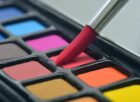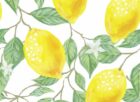Material Design: En Grundlig Översikt

Introduction:
Material Design is a design language developed by Google in 2014. It is aimed at creating a unified experience across different platforms and devices. This article aims to provide a comprehensive overview of Material Design, exploring its principles, types, popularity, quantitative measurements, differences, and historical pros and cons.
1. A Thorough Introduction to Material Design:

Material Design is a design philosophy that combines the classic principles of good design with modern technology and innovation. It focuses on creating a visual and interactive experience that mimics the behavior of real-world, physical materials. The guiding principles of Material Design are based on tangible surfaces, bold colors, and meaningful animations.
2. Extensive Presentation of Material Design:
2.1 What is Material Design?
Material Design is a visual language that uses ”material” as its main metaphor. It is characterized by clean and consistent design elements, such as cards, grids, typography, and icons. Material Design aims to create an intuitive and immersive user experience by bringing structure, hierarchy, and consistency to the digital world.
2.2 Types of Material Design:
Within the Material Design framework, there are different types or components that designers can utilize. These include layout, navigation, scrolling techniques, motion design, and responsive interactions. Each type serves a specific purpose in enhancing the user experience and creating a cohesive design.
2.3 Popular Material Design Examples:
Some popular examples of Material Design can be seen in Google’s own products such as Gmail, Google Docs, and Google Drive. Other popular apps that have adopted Material Design principles include Spotify, Airbnb, and WhatsApp. These examples showcase the versatility and effectiveness of Material Design in various domains.
3. Quantitative Measurements of Material Design:
Quantitative measurements play a crucial role in evaluating the success and impact of Material Design. Metrics such as usability tests, click-through rates, conversion rates, and user engagement can be used to assess the effectiveness of Material Design in achieving its intended goals. These measurements provide valuable insights into the performance and user satisfaction with the design.
4. Discussion on Differentiating Material Designs:
There are various ways in which Material Designs can differ from one another. These differences can be in terms of color schemes, typography choices, iconography, animations, and level of adherence to the Material Design guidelines. These variations allow designers to create unique and customized experiences for their specific applications or brands.
5. Historical Overview of Pros and Cons of Material Design:
5.1 Pros of Material Design:
One of the major advantages of Material Design is its simplicity and consistency, providing users with a seamless experience across different devices and platforms. The use of depth, shadows, and animations creates a sense of engagement and interactivity. Material Design also encourages innovation and creativity while maintaining a strong focus on usability and accessibility.
5.2 Cons of Material Design:
Critics argue that Material Design can lead to a lack of uniqueness and individuality, as many apps and websites may start to look similar due to the standardized design language. Additionally, implementing Material Design can be time-consuming and resource-intensive, especially for older platforms that require significant redesign efforts.
Conclusion:
Material Design is a powerful design language that aims to unify the visual and interactive experience across different devices and platforms. Its principles, types, popularity, quantitative measurements, differentiating factors, and historical pros and cons all contribute to its significance in the design world. By adopting Material Design, designers can create intuitive and visually appealing experiences for their users while maintaining usability and accessibility standards.











